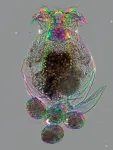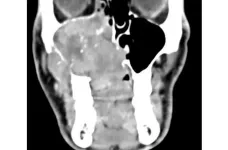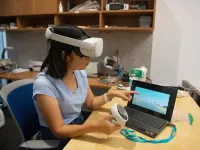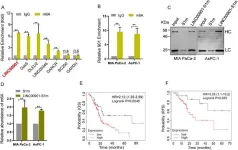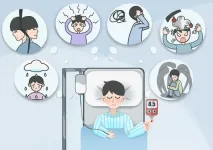We’re closer to engineering blood vessels
University of Melbourne researchers have developed a fast, inexpensive and scalable method for engineering blood vessels from natural tissue.
2023-08-05
(Press-News.org)
University of Melbourne researchers have developed a fast, inexpensive and scalable method for engineering blood vessels from natural tissue.
Co-led by ARC Future Fellow Associate Professor Daniel Heath and Redmond Barry Distinguished Professor and Shanahan Chair in Frontier Medical Solutions Andrea O’Connor, both from the Department of Biomedical Engineering, the researchers employed a novel approach to ‘tissue engineering’ blood vessels.
By combining multiple materials and fabrication technologies, they developed a method to create blood vessels with complex geometries like native blood vessels.
The research was published in the journal ACS Applied Materials and Interfaces on 13 July. University of Melbourne’s Dr Tao Huang and PhD candidates Mathew Mail and Hazem Alkazemi, and Associate Professor Zerina Tomkins from Monash University were also in the research team.
Blood vessels serve an important function in sustaining life, by carrying oxygen-rich blood and essential nutrients to all parts of the body while removing toxic products. Illness and dysfunction in blood vessels, on the other hand, can result in life-threatening disorders such as heart attacks, strokes and aneurysms, making cardiovascular disease the number one killer globally.
Associate Professor Heath said researchers around the world have been trying to perfect blood vessel tissue engineering for many years.
“Current methods are slow, require specialised and expensive equipment like bioreactors, and are low throughput – meaning it’s difficult to provide the needed supply of engineered vessels,” Associate Professor Heath said.
“By combining multiple materials and fabrication technologies, our method brings us closer to a future where engineered blood vessels will become a transformative solution for cardiovascular disease, especially for those patients who lack suitable donor vessels.”
While bypass surgery has proved a life-saving alternative for replacing severely damaged blood vessels, it has limitations, particularly for smaller diameter blood channels such as the coronary artery. Non-living synthetic grafts can cause blood clotting and obstruction, making them unsuitable in some circumstances. As a result, patients who have limited options due to past surgery or comorbidities such as diabetes face significant problems.
To overcome these limitations, the researchers investigated developing 'tissue-engineered' blood vessels, which are made from human cells and tissues. These created vessels have the potential to treat cardiovascular illness, as well as construct built-in blood supply for larger tissue creations.
Professor O’Connor said the research is an exciting step in scientists’ ability to engineer human blood vessels.
“We are now able to rapidly and cheaply manufacture blood vessels using living tissue that has appropriate mechanical properties and mimics the cellular orientation of the inner-most layer of blood vessels," Professor O’Connor said.
“While the engineered blood vessels are not yet ready for bypass surgery, the findings mark a significant advancement in the field of tissue engineering.”
in Pursuit: "We're closer to engineering blood vessels".
"Spontaneous Orthogonal Alignment of Smooth Muscle Cells and Endothelial Cells Captures Native Blood Vessel Morphology in Tissue-Engineered Vascular Grafts.” (Journal article).
END
[Attachments] See images for this press release:
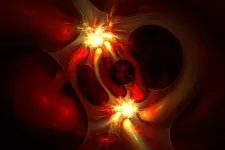
ELSE PRESS RELEASES FROM THIS DATE:
2023-08-04
By Wynne Parry
Much about tiny, swimming rotifers makes them ideal study subjects. Although barely visible to the naked eye, these transparent animals and their innards are readily viewed under a microscope. What’s more, they grow readily in laboratory culture, offering scientists an otherwise difficult-to-obtain perspective from their corner of the animal kingdom.
However, while rotifers have been used experimentally for more than a century by many research groups, scientists have so far lacked the ability to readily manipulate rotifers’ genetics, placing a hard limit on the experiments they can run with these animals.
A joint ...
2023-08-04
The Ecological Society of America has named Elisabeth Huber-Sannwald, Ph.D., as the editor-in-chief of the newest title in its portfolio of journals. The international open-access journal, Earth Stewardship, will focus on facilitating collaborations between scientists and society to shape a sustainable future for nature and people. It will be ESA’s first publication focused on integrating the natural and social sciences; the humanities; and technical, local and Indigenous Knowledges.
Earth Stewardship will highlight perspectives from the southern ...
2023-08-04
The Ecological Society of America (ESA) will present its 16th annual Regional Policy Award to the Director for the Confederated Tribes of the Umatilla Indian Reservation’s (CTUIR) Department of Natural Resources Eric Quaempts on Sunday, Aug 6, 5:00pm EDT, during the ESA Conference Opening Plenary. The ESA annual award recognizes the use of ecological science to inform regional policy decisions. This is the first time in the history of the ESA policy award that a Tribal member and Tribal governance employee has been recognized for integrating tribal ecological approaches.
Since ...
2023-08-04
BOSTON - A new way to monitor two-photon lithography nanoscale fabrication could help improve the accuracy and efficiency of creating 3D engineered tissue scaffolds, according to a new study. Tissue scaffolds mimic the natural extracellular matrices found in the body, which creates a 3D environment ideal for tissue formation.
Jieliyue Sun, an engineering Ph.D. student from the lab of Kimani Toussaint, Brown University will present this research at the Optica Imaging Congress. The hybrid meeting will take place 14 – 17 August 2023 in Boston.
“Tissue scaffolds are three-dimensional structures that can support the growth and development of cells or tissues for biomedical ...
2023-08-04
Highlights:
Researchers led by Rafael Auras in the Michigan State University School of Packaging have shown how to make a bio-based polymer compostable in both home and industrial settings.
The team said its research, published in ACS Sustainable Chemistry & Engineering, can help divert plastic packaging that’s been soiled by food, the vast majority of which is not recycled. Another end-of-use option, like composting, can thus help keep plastics out of landfills and the environment.
To make the compostable polymer, the team blended bioplastics known as polylactic acid, or PLA, and thermoplastic ...
2023-08-04
“Proton therapy [...] seems to have decisive advantages with regard to the long-term survival of [adenoid cystic carcinoma] [...]”
BUFFALO, NY- August 4, 2023 – A new editorial paper was published in Oncoscience (Volume 10) on June 28, 2023, entitled, “Adenoid cystic carcinoma of the head and neck – treatment strategies of a highly malignant tumor with variable localizations.”
In this new editorial, researchers Florian Dudde, Kai-Olaf Henkel and Filip Barbarewicz from the Army Hospital Hamburg discuss head and neck tumors, which are among the most common malignancies. ...
2023-08-04
Researchers have modified a commercial virtual reality headset, giving it the ability to measure brain activity and examine how we react to hints, stressors and other outside forces.
The research team at The University of Texas at Austin created a noninvasive electroencephalogram (EEG) sensor that they installed in a Meta VR headset that can be worn comfortably for long periods. The EEG measures the brain's electrical activity during the immersive VR interactions.
The device could be used in many ways, ...
2023-08-04
Chemical modifications of RNA molecules, such as m6A, can critically impact gene expression, influencing various aspects of cancer development and progression. However, while studies into m6A modification of messenger RNA (mRNA) have been extensive, exploration of its impact on lncRNAs, especially within the context of PDAC, has been relatively limited.
In an innovative study published in the Genes & Diseases journal, a team from the The Children's Hospital, Zhejiang University School of Medicine, People's Hospital of Hangzhou Medical College and University of Mississippi Medical Center employed a methylated RNA immunoprecipitation ...
2023-08-04
In an effort to address health disparities linked to low socioeconomic environments, a University of Massachusetts Amherst kinesiologist is partnering with Western Massachusetts preschools to implement a physical activity program for young children.
Sofiya Alhassan, professor of kinesiology in the School of Public Health and Health Sciences, will measure the impact of a gross motor skills-based physical activity program on the cognitive development of 3- to 5-year-olds enrolled in preschools in communities with low socioeconomic ...
2023-08-04
In your coverage, please use this URL to provide access to the freely available paper in PLOS Medicine: http://journals.plos.org/plosmedicine/article?id=10.1371/journal.pmed.1004261
Article Title: Age- and sex-specific hospital bed-day rates in people with and without type 2 diabetes: A territory-wide population-based cohort study of 1.5 million people in Hong Kong
Author Countries: China
Funding: The author(s) received no specific funding for this work. END ...
LAST 30 PRESS RELEASES:
[Press-News.org] We’re closer to engineering blood vessels
University of Melbourne researchers have developed a fast, inexpensive and scalable method for engineering blood vessels from natural tissue.

